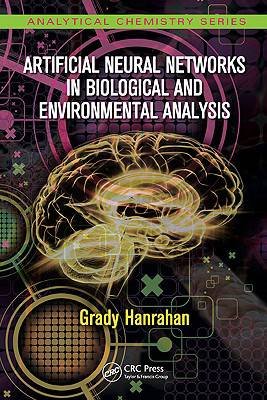
- Retrait gratuit dans votre magasin Club
- 7.000.000 titres dans notre catalogue
- Payer en toute sécurité
- Toujours un magasin près de chez vous
- Retrait gratuit dans votre magasin Club
- 7.000.000 titres dans notre catalogue
- Payer en toute sécurité
- Toujours un magasin près de chez vous
Artificial Neural Networks in Biological and Environmental Analysis
Grady HanrahanDescription
Originating from models of biological neural systems, artificial neural networks (ANN) are the cornerstones of artificial intelligence research. Catalyzed by the upsurge in computational power and availability, and made widely accessible with the co-evolution of software, algorithms, and methodologies, artificial neural networks have had a profound impact in the elucidation of complex biological, chemical, and environmental processes.
Artificial Neural Networks in Biological and Environmental Analysis provides an in-depth and timely perspective on the fundamental, technological, and applied aspects of computational neural networks. Presenting the basic principles of neural networks together with applications in the field, the book stimulates communication and partnership among scientists in fields as diverse as biology, chemistry, mathematics, medicine, and environmental science. This interdisciplinary discourse is essential not only for the success of independent and collaborative research and teaching programs, but also for the continued interest in the use of neural network tools in scientific inquiry.
The book covers:
- A brief history of computational neural network models in relation to brain function
- Neural network operations, including neuron connectivity and layer arrangement
- Basic building blocks of model design, selection, and application from a statistical perspective
- Neurofuzzy systems, neuro-genetic systems, and neuro-fuzzy-genetic systems
- Function of neural networks in the study of complex natural processes
Scientists deal with very complicated systems, much of the inner workings of which are frequently unknown to researchers. Using only simple, linear mathematical methods, information that is needed to truly understand natural systems may be lost. The development of new algorithms to model such processes is needed, and ANNs can play a major role. Balancing basic principles and diverse applications, this text introduces newcomers to the field and reviews recent developments of interest to active neural network practitioners.
Spécifications
Parties prenantes
- Auteur(s) :
- Editeur:
Contenu
- Nombre de pages :
- 214
- Langue:
- Anglais
- Collection :
Caractéristiques
- EAN:
- 9781439812587
- Date de parution :
- 18-01-11
- Format:
- Livre relié
- Format numérique:
- Genaaid
- Dimensions :
- 156 mm x 233 mm
- Poids :
- 475 g







